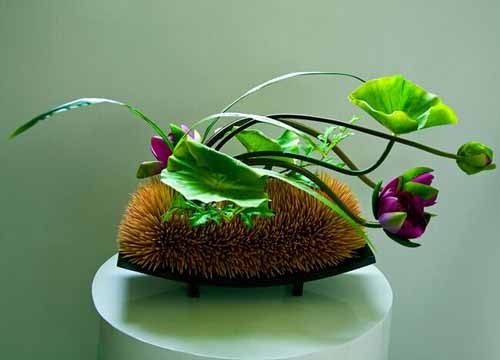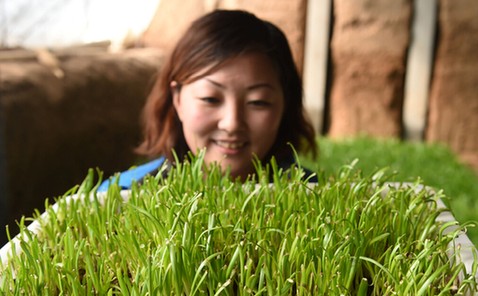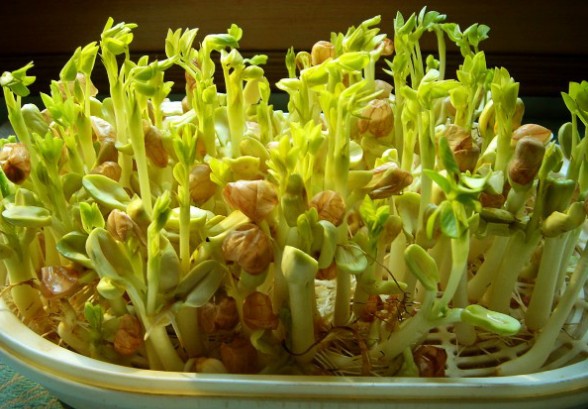Pot planting method of Lotus
The pot soil of lotus pot is best used after people dig pond mud in winter after freezing, or choose cat soil to plant lotus root from March to early April. Usually take more than 3 nodes for 1 plant, and the buds and terminal buds in the nodes should be intact. When planting, put 1cm-2cm thick surface sand at the bottom of the basin, then fill 10cm, and put 200kg 300g of hoof horn or pig hair in the middle of the basin as base fertilizer.

Then, fill the soil to cover the half-waist of the basin, and then plant the lotus root in the basin with a low head and a low tail. The top (lotus root) solitary soil is 7 cm, and the tail is covered with soil 1 cm. After planting, put a small flowerpot in the center of the pot to avoid losing the pot soil when watering. When you start watering, fill the pot with water after infiltration.
1-2 days after planting, take out the basin water and sundries together, wait for the basin soil after 2-3 days, add water to keep 2 cm deep, and gradually add water to the pot mouth with the growth of leaf buds and the rise of temperature.
Steps for pot planting of lotus:
1. Now the pelvic floor is covered with organic fertilizer (such as broken bones, etc.) as the base fertilizer, adding soil 5-6 cm thick.
2. Put two or three lotus roots with 3 nodes in each pot (to wash off the old lotus root whip, cut off the old lotus root whip, and the front end must bring a good top bud), and plant the growth point of the front end diagonally into the soil, so that the tail is slightly exposed in writing, to prevent the heart lotus root whip from pushing out of the soil, so as to avoid the lodging of petiole and pedicel, which is called "hiding head and showing tail" method.
3. After planting the lotus root, cover it with a layer of plain sandy soil to keep the water clean, and then slowly water it in the middle of the basin.
4. At the beginning, the water level should not be too high, and after the leaves grow out, it will gradually rise.
5. If there are too many floating leaves, too many leaves can be stuffed into the basin mud.
Time: 2019-05-25 Click:
- Prev

Organic selenium-rich yellow leek bonsai
Organic selenium-rich leek is a new planting mode developed by Shijiazhuang Yingzhen Trading Co., Ltd. compared with ordinary vegetables, it has the following advantages: 1. Potted vegetables use our own carefully prepared pure organic fertilizer. Without any pesticides and chemical fertilizers, it can completely achieve green organic food.
- Next

Soilless cultivation techniques of sprouts and vegetables that can be used as bonsai
Recently, a group of volunteers from Nanjing Agricultural University walked into the Twin Towers Street Bell Tower community, bringing residents the soilless cultivation technology of sprouts, the new favorite of the dining table, setting off a green whirlwind of organic life in the community. A plate, a handful of seeds, spray water and leave it on the balcony for a week or so.
Related
- Fuxing push coffee new agricultural production and marketing class: lack of small-scale processing plants
- Jujube rice field leisure farm deep ploughing Yilan for five years to create a space for organic food and play
- Nongyu Farm-A trial of organic papaya for brave women with advanced technology
- Four points for attention in the prevention and control of diseases and insect pests of edible fungi
- How to add nutrient solution to Edible Fungi
- Is there any good way to control edible fungus mites?
- Open Inoculation Technology of Edible Fungi
- Is there any clever way to use fertilizer for edible fungus in winter?
- What agents are used to kill the pathogens of edible fungi in the mushroom shed?
- Rapid drying of Edible Fungi

